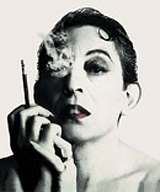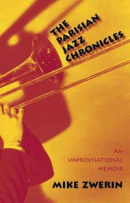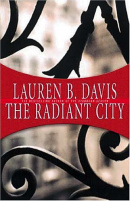 “Qui êtes-vous, Polly Maggoo ?”asks the title of William Klein’s most famous film. If you turn the question around on Klein and ask who he is, the answer is likely to be a long one. For not only is he among the most renowned fashion photographers of the century, but he’s also (as well as art directing his own books), the director of a score of documentaries and feature films, and over 250 television ads.Klein is featured here this winter with a major retrospective at the Pompidou Center. It provides a detailed look at more than 50 years of work, juxtaposing some of his earliest and most recent photographs, as well as various book dummies, extracts from films, paintings, drawings and posters – selected largely from the artist’s personal archives.
“Qui êtes-vous, Polly Maggoo ?”asks the title of William Klein’s most famous film. If you turn the question around on Klein and ask who he is, the answer is likely to be a long one. For not only is he among the most renowned fashion photographers of the century, but he’s also (as well as art directing his own books), the director of a score of documentaries and feature films, and over 250 television ads.Klein is featured here this winter with a major retrospective at the Pompidou Center. It provides a detailed look at more than 50 years of work, juxtaposing some of his earliest and most recent photographs, as well as various book dummies, extracts from films, paintings, drawings and posters – selected largely from the artist’s personal archives.
The Parisian Jazz Chronicles:
 In his Beat-like jaunt through the Parisian and European jazz scene, Mike Zwerin is not unlike Jack Kerouac, Mezz Mezzrow, or Hunter S. Thompson – writers to whom, for different reasons, he owes some allegiance. What makes him special is his devotion to the troubled musicians he idolizes, and a passion for music that is blessedly contagious. Many jazz fans will be familiar with Zwerin’s witty, irreverent and undeniably hip music reviews and articles published in the International Herald Tribune that have entertained us for decades. Based in Paris, or, rather, “stuck” there, as he likes to say, Mike Zwerin who’s been a music critic for the Trib since 1979, also had a distinguished career as a trombonist. When he was just 18 years old, he was invited by Miles Davis to play alongside Gerry Mulligan, John Lewis, and Max Roach in the band that was immortalized as “The Birth of the Cool.” “The Parisian Jazz Chronicles” constitute an engaging personal account of the jazz scene in Paris in the 1980s and 1990s. Zwerin writes lovingly but unsparingly about figures he knew and interviewed – such as Dexter Gordon, Freddy Heineken, Miles Davis, Bob Dylan, Chet Baker, Wayne Shorter, and Melvin Van Peebles. Against this background, he speaks of further allegiances (split between journalism and music, America and France…), while recounting his own life peopled by personal battles (a solitary struggle for sobriety, a failing marriage, and fatherhood…).
In his Beat-like jaunt through the Parisian and European jazz scene, Mike Zwerin is not unlike Jack Kerouac, Mezz Mezzrow, or Hunter S. Thompson – writers to whom, for different reasons, he owes some allegiance. What makes him special is his devotion to the troubled musicians he idolizes, and a passion for music that is blessedly contagious. Many jazz fans will be familiar with Zwerin’s witty, irreverent and undeniably hip music reviews and articles published in the International Herald Tribune that have entertained us for decades. Based in Paris, or, rather, “stuck” there, as he likes to say, Mike Zwerin who’s been a music critic for the Trib since 1979, also had a distinguished career as a trombonist. When he was just 18 years old, he was invited by Miles Davis to play alongside Gerry Mulligan, John Lewis, and Max Roach in the band that was immortalized as “The Birth of the Cool.” “The Parisian Jazz Chronicles” constitute an engaging personal account of the jazz scene in Paris in the 1980s and 1990s. Zwerin writes lovingly but unsparingly about figures he knew and interviewed – such as Dexter Gordon, Freddy Heineken, Miles Davis, Bob Dylan, Chet Baker, Wayne Shorter, and Melvin Van Peebles. Against this background, he speaks of further allegiances (split between journalism and music, America and France…), while recounting his own life peopled by personal battles (a solitary struggle for sobriety, a failing marriage, and fatherhood…).
Ave Montaigne … Paris’ Fashion Blvd
Shopping in this capital is far more than an mere act of self indulgence. It’s the best way to discover the glamorous side of Paris as well as France’s renowned tradition of quality and attention to detail, and inimitable sense of luxury. Though there are several distinctively different “fashion neighborhoods” around the city, none of these can rival with avenue Montaigne’s aura of elegance and plethora of prestigious designer ware.Lined from end to end with a who’s-who list of legendary labels from around the globe, this street represents the best planet style has to offer. Continue reading “Ave Montaigne … Paris’ Fashion Blvd”
Paris’ 18th district
Montrmartre, Pigalle and la Chapelle — Crime and the passion of social ideas; anarchists and artists; sex, drugs, rock ‘n’roll and working class heroes … Paris’ 18th arrondissement has seen it all. Its history tells the tale of some of the major social forces shaping life in this city. Continue reading “Paris’ 18th district”
Crime and the passion of social ideas; anarchists and artists; sex, drugs, rock ‘n’roll and working class heroes … Paris’ 18th arrondissement has seen it all. Its history tells the tale of some of the major social forces shaping life in this city. Continue reading “Paris’ 18th district”
Marc Jacobs
“The most Parisian of American designers”
With his first Paris boutique opening this fall, Marc Jacobs will be the toast of this October’s “Fashion Week.” Paris’ Bon Marché department store tributes this key American fashion designer, as the guest of honor for its current thematic expo dedicated to New York. A sampling of 21 exclusive garments from his eponymous collection is presented within a spectacular “room,” with anthracite walls, barren branches and spotlights. Continue reading “Marc Jacobs”
Martin Parr’s True Colors
 Paris’ Maison Européenne de la Photographie salutes British photographer Martin Parr with a retrospective of his work. While in the ’80s most serious documentary photographers were using black and white film Parr pushed the limits of the medium with exaggerated color pictures often portraying banal subjects. His pioneering series – “Last Resort” (1986), “The Cost of Living” (1989) and “Small World” (1994) – now rank as a major turning point for contemporary photography. Parr gained his reputation through his ironic look at British middle and working class consumer society. The MEP’s exhibition includes not only his legendary depictions of Great Britain’s Thatcher era, but also some of the photographer’s early work in black in white created during the 1970s – as well as newer pictures such as “Common Sense” and “Cherry Blossom.” Continue reading “Martin Parr’s True Colors”
Paris’ Maison Européenne de la Photographie salutes British photographer Martin Parr with a retrospective of his work. While in the ’80s most serious documentary photographers were using black and white film Parr pushed the limits of the medium with exaggerated color pictures often portraying banal subjects. His pioneering series – “Last Resort” (1986), “The Cost of Living” (1989) and “Small World” (1994) – now rank as a major turning point for contemporary photography. Parr gained his reputation through his ironic look at British middle and working class consumer society. The MEP’s exhibition includes not only his legendary depictions of Great Britain’s Thatcher era, but also some of the photographer’s early work in black in white created during the 1970s – as well as newer pictures such as “Common Sense” and “Cherry Blossom.” Continue reading “Martin Parr’s True Colors”
Lauren B. Davis’ “Radiant City”
 In her beautiful new novel, “The Radiant City,” Canadian writer Lauren B. Davis evokes a Paris that is decidedly on the edge, a city in which everyone has come from somewhere else and is trying desperately to lose themselves. Continue reading “Lauren B. Davis’ “Radiant City””
In her beautiful new novel, “The Radiant City,” Canadian writer Lauren B. Davis evokes a Paris that is decidedly on the edge, a city in which everyone has come from somewhere else and is trying desperately to lose themselves. Continue reading “Lauren B. Davis’ “Radiant City””
Picturing “No Man’s Land”
 Rather than security, the wall will only guarantee endless war. Robert Frost wrote that ‘good fences make good neighbors.' What do bad fences make?"
Rather than security, the wall will only guarantee endless war. Robert Frost wrote that ‘good fences make good neighbors.' What do bad fences make?"
“I began photographing Israel’s ‘Security Fence’ in 2003, a decade after I made my first trip to the Middle East, following the signing of the Oslo Peace Accords. I have been documenting the Arab-Israeli conflict ever since that first visit.Canadian photo journalist Larry Towell is exhibiting his pictures of the Israeli-occupied territories in Palestine, at the Fondation Henri Cartier-Bresson. His images provide a sensitive and humane view of the people of the Jenin refugee camp home to some 14 000 Palestinians. Recently, the Magnum photographer had this to say about his experience taking those pictures. Continue reading “Picturing “No Man’s Land””
Shy Guy Wants to Meet French Women
Q. As an American bachelor who has recently moved to France for a few years, I am intent on creating a social life for myself that includes as much contact as possible with French people. I keep hearing about cultural differences, and am a bit shy about making overtures to French women for fear of violating some major cultural taboo. Is there any guidance you can give to help me overcome what is becoming a (I think) ridiculous obstacle?
Yohji Yamamoto’s “Intellectual Fashion”
In 1981, Yohji Yamamoto was part of a small group of Japanese designers who defied traditional modes of fashion by introducing androgynous frocks to the runways of Paris. This “intellectual fashion,” as it was called, replaced frills, bows and silks with sober materials and experimental cutting and draping, much of which shared a base of Japanese industrial uniforms. A graduate of the famed Bunka Gakuen college in Tokyo in 1969, Yohji launched a label called “Y’s” in 1972. Continue reading “Yohji Yamamoto’s “Intellectual Fashion””
Paris’Back Street Disquaires

Crackly vinyl is making a comeback…
There’s more to music shopping than just paying for an album – it’s a lifestyle. High street record stores will never be able to buy identity or attitude. That’s why right now, second-hand CD shops and specialist boutiques are the places to hang out at. And even good old crackly vinyl is making a comeback. So where better to hunt for these authentic sounds than Paris’ back street disquaires, where knowledge, personality and individual music-lovers rule supreme. In these smaller haunts, you can rummage for records, chat with the clerk and feel the atmosphere of the music – be it opera or punk. Now’s the time to discover a new neighborhood, some new people and definitely some new music… Continue reading “Paris’Back Street Disquaires”




